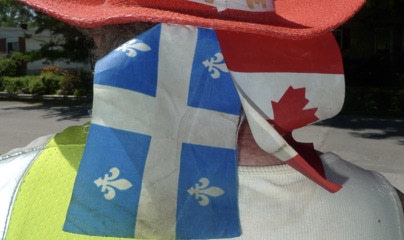Gatineau presents the results of the “Understanding Old Aylmer” initiative
Sophie Demers
On November 17 at the Ernest-Lattion Community Centre, Gatineau presented the results of the Understanding Old Aylmer participatory urban planning initiative to residents. The initiative is part of Gatineau’s Programme Particulier d’Urbanisme (PPU). The PPU is an urban planning tool that the municipality uses when planning development in the target area. It is a component of Gatineau’s Urban Plan.
The presentation consisted of a summary of the participatory territorial analysis which was based on a series of public consultations that took place in the summer. The previous consultations for the initiative included an exploratory walk of Old Aylmer, a roundtable discussion, and an online public discussion.
The territorial analysis combined the information from the public consultation events to create a document that aims to provide an accurate and up-to-date profile of the sector by those who use and live in it. The analysis included conclusions made by the urban planners, the citizens and the PPU advisory committee that is composed of various organizations in Aylmer such as APICA, residents' associations, local councillors, and the heritage association, among others.
The area analyzed extended East to West from Centre Aquatique Paul-Pelletier to Parc des Cèdres and north to south from Brook Street to Lucerne Boulevard.
The summary analysis covered Old Aylmer’s urban form, which detailed the historical evolution of the sector, the building and cultural heritage, footprint and building template, and the evolutions of urban development. The second section focused on the environment which included tree coverage, hydrography, riparian and natural areas, and temperature and heat islands. The third section highlighted transportation and mobility, which analyzed collective, individual, active, and pedestrian transportation. Finally, the last section focused on urban functions, including land use and regulation, commercial businesses, community and cultural activities, equipment, infrastructures, and services.
After the presentation, participants could make comments or ask questions. Every participant that voiced questions, concerns or comments included that they felt the analysis provided a great representation of the sector. However, there remained concerns from multiple participants that, despite the effort to create the PPU, these urban planning suggestions are not regulations and could be disregarded in the future.
It was also noted by participants that have attended multiple public consultations that developers were not present or active in the process. The concern remains that if a developer proposed a project and wants exceptions to the suggestions outlined in the PPU that the municipal council will disregard the document.
Steven Boivin, Aylmer Councillor responded, “This is a topic that we have discussed from the beginning. I am 100% on the same page with these concerns. The PPU is a tool and guide to urban planning in the Aylmer sector and not regulations that must be followed. We may be able to have discussions about how the PPU can inform regulation changes in the future but that is not this current project. However, it is a great tool for when I am fighting for Aylmer on the Council and can refer to the document if it is not respected.”
The next step for the PPU is developing the plan based on the analysis conducted, which will be presented to the municipal council for adoption in Spring 2023.





